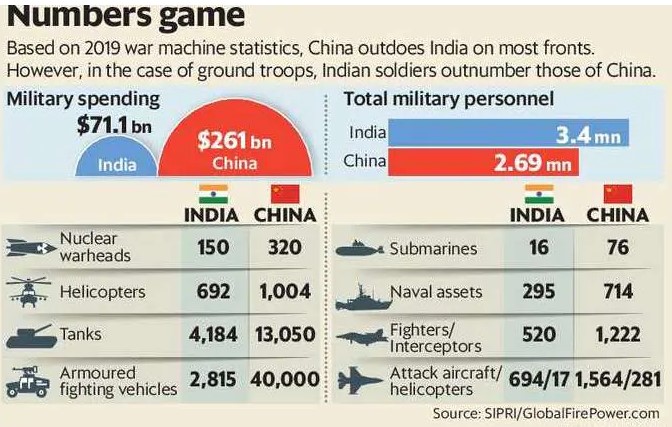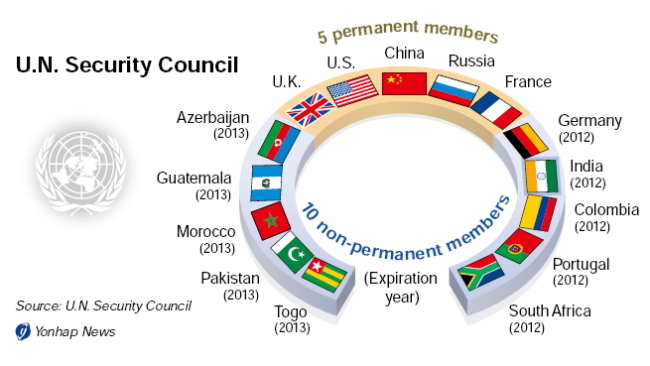Contents
- Banning trade with China
- The India-China conflict is not all about power play
- What are non-permanent seats in the UNSC?
BANNING TRADE WITH CHINA
Focus: GS-III Indian Economy, GS-II International Relations
Why in news?
- After the recent clashes in along the Line of Actual Control between India and China which led to bloodshed has caused Indians breaking and burning their fully Chinese products and spreading it on the social media that Indians should boycott Chinese goods and thus “teach China a lesson”.
- The recent clashes have also reignited questions about India’s dependence on Chinese manufacturing, given that dependency on China has actually gone up in the last five years.
Dependence on Chinese Imports
Most of the critical medical supplies which India has been importing for frontline healthcare workers in the COVID-19 battle come from China.
Indian manufacturing is also dependent on supplies from China including a wide variety of machineries.
There are 2 reasons why China is so central to a very large number of global and regional supply chain:
- China offers the capacity to businesses to develop the supply chains by considerable lengths within itself.
- China has also become a major consumer for final products and remains a major source of the final demand market.
Why is it a bad idea to turn border dispute into a trade war?
I. Trade deficits are not necessarily bad
- Trade deficits/surpluses are just accounting exercises and having a trade deficit against a country doesn’t make the domestic economy weaker or worse off.
- To explain: India has trade surplus with the US, the UK and the Netherlands, but that doesn’t mean the Indian economy is stronger or better off than any of these three.
- A trade deficit with China only means that Indians buy more Chinese products than what Chinese from India.
- Essentially, it shows that Indian consumers, as well as the Chinese producers, gained through trading. It is this very process that generates the gains from trade. Both sides are better off than what they would have been without trade.
- At one level, no country is self-sufficient and that is why trade is profitable for both sides.
II. Will hurt the Indian poor the most
- In most cases, the poorest consumers are the worst-hit in a trade ban of this kind because they are the most price-sensitive.
- The Chinese products that are in India are already paid for. By banning their sale or avoiding them, Indians will be hurting fellow Indian retailers.
III. Will punish Indian producers and exporters
- Indian consumers of Chinese imports does not comprise just those who consume the final finished good from China; several businesses in India import intermediate goods and raw materials, which, in turn, are used to create final goods — both for the domestic Indian market as well as the global market (as Indian exports).
- Trading hurts only the less efficient Indian producers while helping the more efficient Indian producers and businesses. So, a ban on Chinese imports will hurt all these businesses at a time when they are already struggling to survive, apart from hitting India’s ability to produce finished goods.
IV. Will barely hurt China
- While China accounts for 5% of India’s exports and 14% of India’s imports — in US$ value terms — India’s imports from China (that is, China’s exports) are just 3% of China’s total exports.
- More importantly, China’s imports from India are less than 1% of its total imports.
- The point is that if India and China stop trading then — on the face of it — China would lose only 3% of its exports and less than 1% of its imports, while India will lose 5% of its exports and 14% of its imports.
- Avoiding buying all products that use Chinese goods and labour is a near-impossible task primarily because of China’s centrality in global trade and global value chains.
V. India will lose policy credibility
If policies can be changed overnight, if taxes can be slapped with retrospective effect, or if the government itself reneges on contracts, no investor will invest considering the risk involved.
VI. Raising tariffs is mutually assured destruction
By slapping higher import duties, India would be breaking the rules of the World Trade Organization and if China reciprocates in the same way we will end up realising that it is much easier for China to replace India than for India to replace China.
Way Forward
- Data suggests that global value chains are in fact becoming more local, and countries are depending more on their own economies rather than on global markets.
- The surge of protectionism and anti-globalisation sentiment since the start of the Global Financial Crisis of 2008 is well known but it is also well established that trade leaves people better off.
- India must try to aggressively acquire a higher share of global trade by raising its competitiveness, since, currently the India does not have a significant share in world trade.
- The Government can put in place policies and create the infrastructure that raises competitiveness, without having to “force” or even “nudge” people to move away from trade because doing so will undermine efficiency and come at the cost of the consumer’s benefits.
- Make in India initiative was a good opportunity for us to get our manufacturing sector back on track.
- One thing India can offer that other countries in South-East Asia cannot to the same degree, is the market – and if we can leverage that better, then we will be attracting a higher share of involvement in world trade.
-Source: The Hindu, Indian Express,
THE INDIA-CHINA CONFLICT IS NOT ALL ABOUT POWER PLAY
Focus: GS-III Security Challenges, GS-II International Relations,
The History of India-China Border Dispute
- There is no mutually agreed Line of Actual Control (LAC) along certain stretches of the 3,488-km long India-China border and both sides claim parts of it as their own.
- Representatives from China and Tibet gathered in Simla in 1914 to negotiate a treaty that would determine the status of Tibet and effectively settle the border.
- After initially accepting the agreement, the Chinese went back on their word.
- This status lingered on till 1962 when China attacked India and occupied the region of Aksai Chin.
- China still occupies that part of Ladakh. It also claims that Arunachal Pradesh is part of its territory.
How do the two armies compare?

- China spent close to $200 billion more than India’s $70+ billion on defence in 2019.
- China outdoes India on most numbers except in the case of ground troops in the conflict region.
- The Indian Air Force with its Mirage 2000 and Sukhoi Su-30 jets has a qualitative edge over China’s J-10, J-11 and Su-27 aircraft. India’s fleet comprises all-weather, multi-role aircraft while only the J-10 in China has those capabilities.
Does it all boil down to superiority in numbers?
- India’s is the more experienced and battle-hardened side, thanks to its low-intensity conflicts with Pakistan over decades.
- China’s People’s Liberation Army has not experienced this kind of combat since the Vietnam war in 1979.
- India has an edge at high altitudes.
- It also maintains a string of air bases near China’s border from where it can launch aircraft.
What makes this conflict tricky?
- China is stronger when it comes to technology and new weapons even though both are nuclear nations. Its economy is five times India’s.
- But India participates in joint military drills with the US, Japan, France and Australia.
- In the event of a large-scale conflict, US intelligence could help India get a clearer picture of the battlefields.
-Source: Livemint
WHAT ARE NON-PERMANENT SEATS IN THE UNSC?
Focus: GS-II International Relations
Why in news?
Member States of the UN Security Council elect India to the non-permanent seat of the Security Council for the term 2021-22.
What are ‘non-permanent seats’ at the UNSC?
The UNSC is composed of 15 members: five permanent members — China, France, Russian Federation, the United States, and the United Kingdom — and 10 non-permanent members who are elected by the General Assembly.
The non-permanent members are elected for two-year terms — so every year, the General Assembly elects five non-permanent members out of the total 10.

These 10 seats are distributed among the regions of the world: five seats for African and Asian countries; one for Eastern European countries; two for Latin American and Caribbean countries; and two for Western European and Other Countries.
What happened at the election that India won?
- India was the only candidate for the vacancy from the Asia Pacific. Its candidature for the seat was endorsed unanimously by the Asia Pacific group, which comprises 55 countries, including Pakistan and China, last year.
- That endorsement meant that India would be a “clean slate” candidate for the elections, with an assured victory.
Click Here to read more about The United Nations Security Council (UNSC) (2nd Article)
Click Here to read more about India’s Case for Permanent seat at UNSC
-Source: Indian Express





